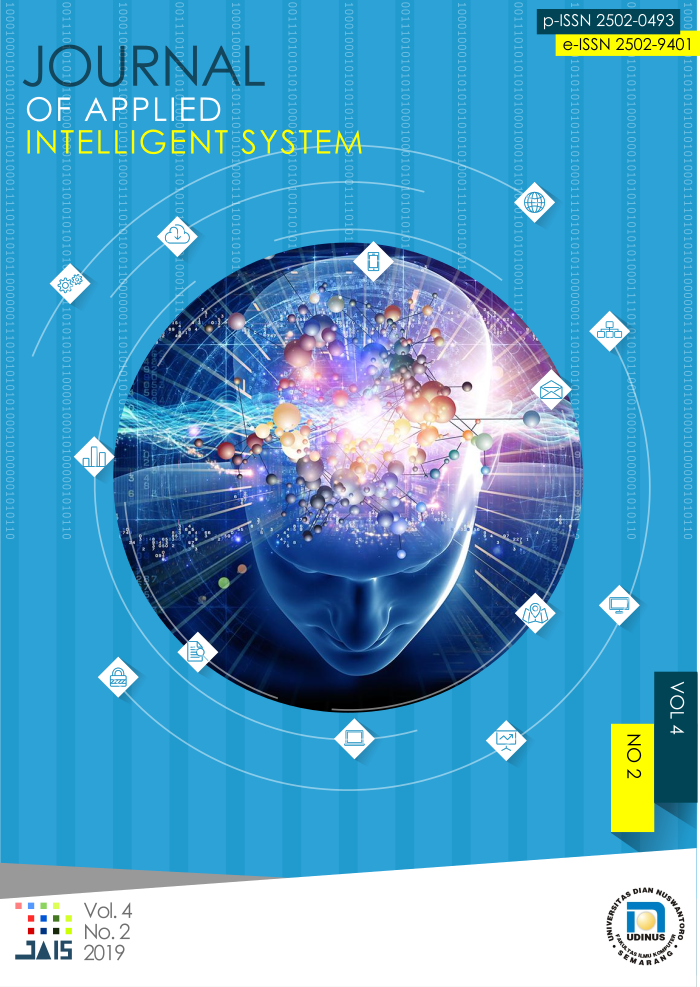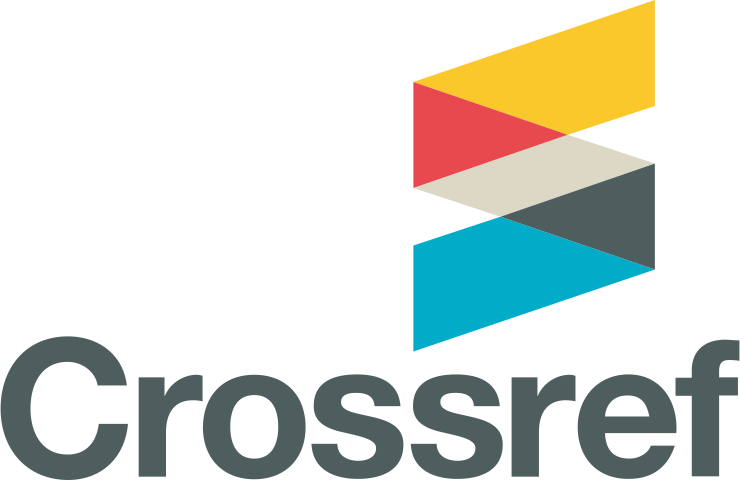Securing Digital Color Image based on Hybrid Substitution Cipher
DOI:
https://doi.org/10.33633/jais.v4i2.3380Abstract
This study proposes securing digital color images with hybrid substitution cryptographic methods combined with the Vigenere and Beaufort methods. The hybrid process is carried out using the help of two randomly generated keys. The first key is a matrix with an 8-bits value and the second key is a matrix with a binary value. The binary key is used to determine the Vigenere or Beaufort process, while the 8-bit key is used for modulus operations based on the Vigenere or Beaufort algorithm. At the test stage used a standard image that has an RGB color channel as a dataset. The quality of the cryptographic method is measured by several measuring instruments such as MSE, PSNR, and SSIM to determine the quality of encryption visually and the perfection of decryption, besides that it is used Entropy, NPCR and UACI to determine the probability of encryption resistance and quality against differential attacks. The TIC TOC function is also used to measure the computing speed of the encryption and decryption process. Measurement results using all measuring instruments indicate that the proposed method has very satisfying results and has fast computing. Keywords – Cryptography, Substitution Cipher, Modulus Function, Encryption, Decryption, Image TransmissionÂReferences
A. Setyono, D. R. I. M. Setiadi, and Muljono, “Dual encryption techniques for secure image transmission,†J. Telecommun. Electron. Comput. Eng., 2018.
D. Ravichandran, P. Praveenkumar, J. B. B. Rayappan, and R. Amirtharajan, “DNA Chaos Blend to Secure Medical Privacy,†IEEE Trans. Nanobioscience, vol. 16, no. 8, pp. 850–858, Dec. 2017.
F. Mushtaq Sher Ali and F. Hassan Sarhan, “Enhancing Security of Vigenere Cipher by Stream Cipher,†Int. J. Comput. Appl., vol. 100, no. 1, pp. 975–8887, 2014.
C. Irawan, D. R. I. M. Setiadi, E. H. Rachmawanto, C. A. Sari, and M. Doheir, “Hybrid Encryption using Confused and Stream Cipher to Improved Medical Images Security,†J. Phys. Conf. Ser., vol. 1201, no. 1, p. 012022, May 2019.
R. Ahuja, B. E. Student, M. Ramrakhyani, B. Manchundiya, and S. Shroff, “Dual Layer Secured Password Manager using Blowfish and LSB,†Int. J. Comput. Appl., vol. 143, no. 3, pp. 975–8887, 2016.
V. M. Putrie, C. A. Sari, D. R. I. M. Setiadi, and E. H. Rachmawanto, “Super Encryption using Transposition-Hill Cipher for Digital Color Image,†in 2018 International Seminar on Research of Information Technology and Intelligent Systems (ISRITI), 2018, pp. 152–157.
X. Q. Fu, B. C. Liu, Y. Y. Xie, W. Li, and Y. Liu, “Image encryption-then-transmission using DNA encryption algorithm and the double chaos,†IEEE Photonics J., vol. 10, no. 3, Jun. 2018.
E. Setyaningsih, C. Iswahyudi, and N. Widyastuti, “Image Encryption on Mobile Phone using Super Encryption Algorithm,†TELKOMNIKA (Telecommunication Comput. Electron. Control., vol. 10, no. 4, pp. 815–824, 2012.
N. Yu et al., “Double images encryption in optical image subtraction/addition 4F system,†Optik (Stuttg)., vol. 178, pp. 135–141, Feb. 2019.
H. Diab, “An Efficient Chaotic Image Cryptosystem Based on Simultaneous Permutation and Diffusion Operations,†IEEE Access, vol. 6, pp. 42227–42244, Jul. 2018.
Z. Hua, Y. Zhou, and H. Huang, “Cosine-transform-based chaotic system for image encryption,†Inf. Sci. (Ny)., vol. 480, pp. 403–419, Apr. 2019.
C. Li, D. Lin, and J. Lu, “Cryptanalyzing an Image-Scrambling Encryption Algorithm of Pixel Bits,†IEEE Multimed., vol. 24, no. 3, pp. 64–71, 2017.
X. Wang, X. Zhu, and Y. Zhang, “An Image Encryption Algorithm Based on Josephus Traversing and Mixed Chaotic Map,†IEEE Access, vol. 6, pp. 23733–23746, Feb. 2018.
B. B. Mohammed, “Automatic Key Generation of Caesar Cipher,†Int. J. Eng. Trends Technol., vol. 6, no. 6, 2013.
D. Venkata Vidya Deepthi, B. Homer Benny, K. Sreenu, and E. Id, “Various Ciphers in Classical Cryptography,†J. Phys. Conf. Ser., vol. 1228, no. 1, 2019.
M. Rathidevi, R. Yaminipriya, and S. V. Sudha, “Trends of cryptography stepping from ancient to modern,†in IEEE International Conference on Innovations in Green Energy and Healthcare Technologies - 2017, IGEHT 2017, 2017.
P. Jindal and B. Singh, “RC4 Encryption-A Literature Survey,†Procedia Comput. Sci., vol. 46, pp. 697–705, 2015.
A. Bhowmick, N. Sinha, R. V. Arjunan, and B. Kishore, “Permutation-Substitution architecture based image encryption algorithm using middle square and RC4 PRNG,†in 2017 International Conference on Inventive Systems and Control (ICISC), 2017, pp. 1–6.
D. R. I. M. Setiadi, E. H. Rachmawanto, C. A. Sari, A. Susanto, and M. Doheir, “A Comparative Study of Image Cryptographic Method,†in 2018 5th International Conference on Information Technology, Computer, and Electrical Engineering (ICITACEE), 2018, pp. 336–341.
V. Rekhate, A. Tale, N. Sambhus, and A. Joshi, “Secure and efficient message passing in distributed systems using One-Time Pad,†in International Conference on Computing, Analytics and Security Trends, CAST 2016, 2017, pp. 393–397.
K. Alallayah, M. Amin, W. Abd El-Wahed, and A. Alhamami, “Attack and Construction of Simulator for Some of Cipher Systems Using Neuro-Identifier,†Int. Arab J. Inf. Technol., vol. 7, no. 4, pp. 365–372, 2010.
Ming Hsieh Department of Electrical Engineering USC Viterbi School of Engineering, “SIPI Image Database.†[Online]. Available: http://sipi.usc.edu/database/. [Accessed: 27-Mar-2019].
M. A. Mokhtar, S. N. Gobran, and E. S. A. M. El-Badawy, “Colored image encryption algorithm using DNA code and Chaos theory,†in Proceedings - 5th International Conference on Computer and Communication Engineering: Emerging Technologies via Comp-Unication Convergence, ICCCE 2014, 2015, pp. 12–15.
A. A. Abd El-Latif, B. Abd-El-Atty, and M. Talha, “Robust Encryption of Quantum Medical Images,†IEEE Access, vol. 6, pp. 1073–1081, Nov. 2017.
Downloads
Published
Issue
Section
License
- Authors retain copyright and grant the journal right of first publication with the work simultaneously licensed under a Creative Commons Attribution License that allows others to share the work with an acknowledgment of the work's authorship and initial publication in this journal.
- Authors are able to enter into separate, additional contractual arrangements for the non-exclusive distribution of the journal's published version of the work (e.g., post it to an institutional repository or publish it in a book), with an acknowledgment of its initial publication in this journal.
- Authors are permitted and encouraged to post their work online (e.g., in institutional repositories or on their website) prior to and during the submission process, as it can lead to productive exchanges, as well as earlier and greater citation of published work (See The Effect of Open Access).









